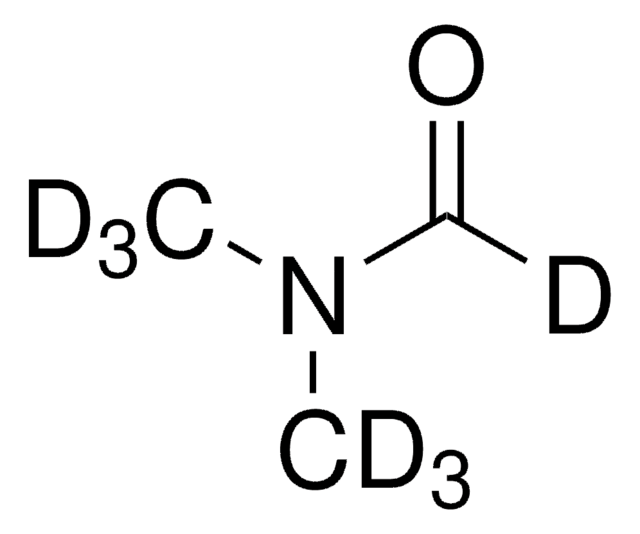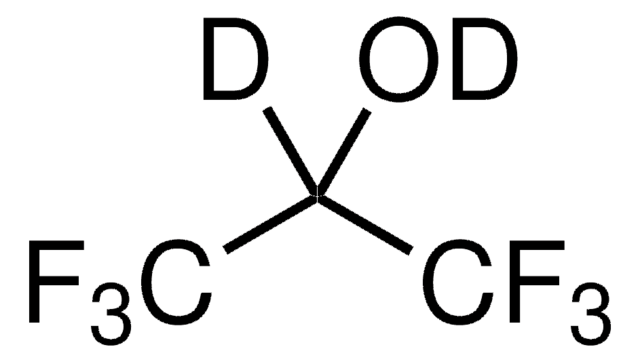269905
N,N-Dimethylformamide-d7
≥99.5 atom % D, contains 1 % (v/v) TMS
Synonyme(s) :
DMF-d7, Heptadeutero-N,N-dimethylformamide
About This Item
Produits recommandés
Pureté isotopique
≥99.5 atom % D
Pureté
≥99% (CP)
Forme
liquid
Contient
1 % (v/v) TMS
Technique(s)
NMR: suitable
Indice de réfraction
n20/D 1.428 (lit.)
Point d'ébullition
153 °C (lit.)
Densité
1.03 g/mL at 25 °C (lit.)
Changement de masse
M+7
Chaîne SMILES
[2H]C(=O)N(C([2H])([2H])[2H])C([2H])([2H])[2H]
InChI
1S/C3H7NO/c1-4(2)3-5/h3H,1-2H3/i1D3,2D3,3D
Clé InChI
ZMXDDKWLCZADIW-YYWVXINBSA-N
Vous recherchez des produits similaires ? Visite Guide de comparaison des produits
Application
- Investigation of the feasibility of directly-coupled HPLC-NMR with 2H detection: This research utilizes N,N-Dimethylformamide-d₇ to enhance the capabilities of HPLC-NMR systems, providing a methodological breakthrough for analyzing the metabolism of complex molecules in pharmaceutical sciences. This advancement is critical for the development of new drugs and understanding their metabolic pathways (Farrant RD et al., 1997).
- Deuterium NMR spectroscopy of biofluids for the identification of drug metabolites: Applies N,N-Dimethylformamide-d₇ in deuterium NMR spectroscopy to identify and analyze drug metabolites in biological fluids. This technique provides a high-resolution method for drug testing and toxicological studies, enhancing the accuracy and efficiency of pharmaceutical research (Farrant RD et al., 1993).
Produits recommandés
Mention d'avertissement
Danger
Mentions de danger
Classification des risques
Acute Tox. 4 Dermal - Acute Tox. 4 Inhalation - Eye Irrit. 2 - Flam. Liq. 3 - Repr. 1B
Code de la classe de stockage
3 - Flammable liquids
Classe de danger pour l'eau (WGK)
WGK 2
Point d'éclair (°F)
136.4 °F - closed cup
Point d'éclair (°C)
58 °C - closed cup
Faites votre choix parmi les versions les plus récentes :
Déjà en possession de ce produit ?
Retrouvez la documentation relative aux produits que vous avez récemment achetés dans la Bibliothèque de documents.
Les clients ont également consulté
Notre équipe de scientifiques dispose d'une expérience dans tous les secteurs de la recherche, notamment en sciences de la vie, science des matériaux, synthèse chimique, chromatographie, analyse et dans de nombreux autres domaines..
Contacter notre Service technique












